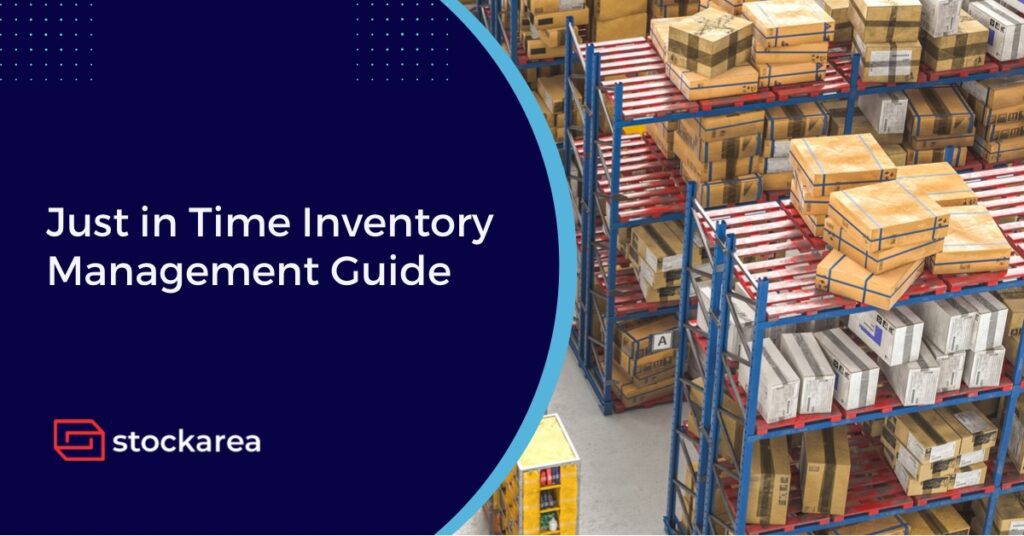What is Just-in-Time (JIT)?
Just-in-time inventory management is a way of procuring products from suppliers only as they are required. This method’s primary purpose is to reduce inventory holding costs while increasing inventory turnover.
Just-in-time demands meticulous planning of the entire supply chain and the use of superior software to manage the entire process which boosts efficiency and reduces the possibility of error by monitoring each operation. The objective is to maintain high production volumes while maintaining a low inventory level, enhancing efficiency and eliminating waste. Numerous businesses have implemented just-in-time inventory management to reduce costs and remain competitive.
How Does JIT Inventory Management Work?
JIT inventory management reduces the inventory costs and boosts efficiency. JIT production systems reduce inventory costs by allowing manufacturers to obtain supplies and parts when they are required for manufacturing, eliminating the need for storage. Additionally, manufacturers are not left with excess inventory in the event of order cancellation or non-fulfillment.
A JIT inventory system is exemplified by a car manufacturer that maintains low inventories but depends largely on its supply chain to provide the parts required to produce cars on an as-needed basis. As a result, the manufacturer orders the components necessary to assemble the automobiles only after receiving an order. To thrive with JIT manufacturing, businesses must have consistent production, high-quality workmanship, fault-free plant machinery, and dependable suppliers.
Benefits of Just-in-Time Inventory
Numerous businesses are hampered by unsold inventory that consumes valuable space. The products may be liquidated or otherwise disposed of at a loss. Inventory management on a just-in-time basis alleviates the burden of sunk expenses. Using a JIT strategy, a business can cut costs, allowing it to compete on price in the marketplace and improve financial performance.
1. Decreases inventory cost
Implementing a Just-in-Time inventory system reduces the amount of material on hand in the production facility. Businesses can save their storage and maintenance costs and avoid the risk of materials becoming obsolete while in storage.
2. Improve Efficiencies
JIT results in a greater inventory turnover rate, which prevents the merchandise from becoming obsolete in your warehouse for an extended period of time. Local sourcing guarantees that your suppliers are located close to your manufacturing facilities, allowing for on-time deliveries and reducing the need for safety stock.
3. Optimize Production
JIT inventory management decreases bottlenecks and delays throughout the production cycle by eliminating product defects and automating operations. Reduced production cycles improve on-time delivery and customer satisfaction. JIT scheduling guarantees that jobs are planned precisely when required, ensuring that production runs begin and terminate on time for shipping.
4. Customer Satisfaction Enhancement
To meet customer needs, businesses employ a Just-in-Time system or lean manufacturing. In a Just-in-Time production environment, the customer’s voice is constantly present. Reduced lead times and expenses enable a business to provide a product to a client faster and at a cheaper cost.
Final Thoughts
A just-in-time inventory management strategy avoids waste associated with ordering and holding extra inventory. Adopting JIT necessitates reexamining your company’s whole operation, from raw materials to finished products. As a result, the total financial investment and carrying expenses and the infrastructure required to keep the inventory are reduced.
FAQ
JIT inventory management and manufacturing are based on the same principle: manufacture or receive a product only when it is required. They function at distinct places along the supply chain yet are capable of cooperating or operating independently.
JIT inventory examples include multinational corporations such as Apple, Tesla, Toyota, Harley-Davidson, Kellogg’s, and Zara. It is a Japanese methodology that has been widely adopted by numerous multimillion-dollar organizations worldwide. Amazon, Dell, Motorola, and Nike, to mention a few, are also household names in the business.
JIT ultimate goal is to regulate the manufacturing process in order to avoid any potential damages or expenditures related to material handling, stocking, tracing, and production. It enables you to store only the inventory necessary to meet demand.
Related posts
- 7 Major Benefits Of Just-In-Time (JIT) Process
- An Ultimate Guide To Inventory Management
- 8 Best Inventory Management Practices
- What Is Warehousing?
- How To Choose The Best Inventory Management Software For Your Business
- Guide To 3PL In Reverse Logistics
- 7 Proven Ways To Improve Your Supply Chain Management (SCM)
- What Is Supply Chain Management (SCM)?
- 7 Key Objectives Of Supply Chain Management (SCM)
- Top 10 Logistics Trends To Look Out In 2024
- Everything You Need To Know About FTL Shipping
- Top 10 Ways To Reduce Supply Chain Costs
- What Is Reverse Logistics?
